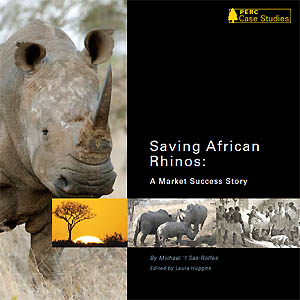DOWNLOAD THE FULL REPORT
In 1900, the southern white rhinoceros was the most endangered of the five rhinoceros species. Less than 20 rhinos remained in a single reserve in South Africa. By 2010, white rhino numbers had climbed to more than 20,000, making it the most common rhino species on the planet.
Saving the white rhino from extinction can be attributed to a change in policy that allowed private ownership of wildlife. Property rights over rhinos changed the incentives of private ranchers by encouraging breeding. Ranchers were also able to profit by limited trophy hunting.
Poaching for rhino horn, which is in high demand for medicinal and ornamental purposes, had also devastated the rhino population. CITES banned the commercial sale of rhino horn, which caused black market sales to sky rocket and encouraged poaching. If the ban were lifted, ranchers are ready to supply the market by harvesting the horns humanely, which then regrow just like fingernails.
Strong property rights and market incentives have provided a successful model for rhino conservation, despite the negative impact of command-and-control approaches that rely on regulations and bans that restrict wildlife use.




